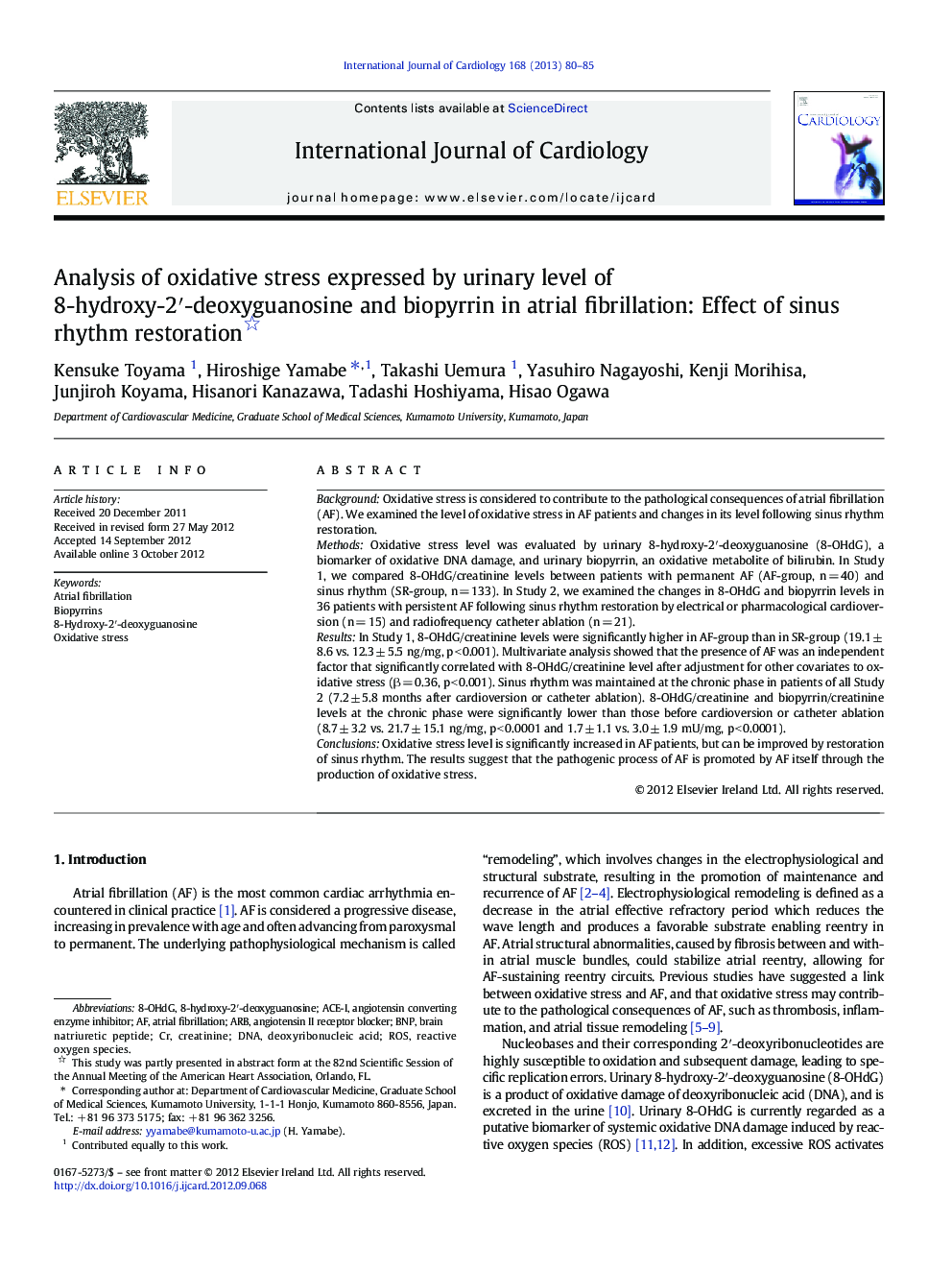| کد مقاله | کد نشریه | سال انتشار | مقاله انگلیسی | نسخه تمام متن |
|---|---|---|---|---|
| 5976541 | 1576211 | 2013 | 6 صفحه PDF | دانلود رایگان |

BackgroundOxidative stress is considered to contribute to the pathological consequences of atrial fibrillation (AF). We examined the level of oxidative stress in AF patients and changes in its level following sinus rhythm restoration.MethodsOxidative stress level was evaluated by urinary 8-hydroxy-2â²-deoxyguanosine (8-OHdG), a biomarker of oxidative DNA damage, and urinary biopyrrin, an oxidative metabolite of bilirubin. In Study 1, we compared 8-OHdG/creatinine levels between patients with permanent AF (AF-group, n = 40) and sinus rhythm (SR-group, n = 133). In Study 2, we examined the changes in 8-OHdG and biopyrrin levels in 36 patients with persistent AF following sinus rhythm restoration by electrical or pharmacological cardioversion (n = 15) and radiofrequency catheter ablation (n = 21).ResultsIn Study 1, 8-OHdG/creatinine levels were significantly higher in AF-group than in SR-group (19.1 ± 8.6 vs. 12.3 ± 5.5 ng/mg, p < 0.001). Multivariate analysis showed that the presence of AF was an independent factor that significantly correlated with 8-OHdG/creatinine level after adjustment for other covariates to oxidative stress (β = 0.36, p < 0.001). Sinus rhythm was maintained at the chronic phase in patients of all Study 2 (7.2 ± 5.8 months after cardioversion or catheter ablation). 8-OHdG/creatinine and biopyrrin/creatinine levels at the chronic phase were significantly lower than those before cardioversion or catheter ablation (8.7 ± 3.2 vs. 21.7 ± 15.1 ng/mg, p < 0.0001 and 1.7 ± 1.1 vs. 3.0 ± 1.9 mU/mg, p < 0.0001).ConclusionsOxidative stress level is significantly increased in AF patients, but can be improved by restoration of sinus rhythm. The results suggest that the pathogenic process of AF is promoted by AF itself through the production of oxidative stress.
Journal: International Journal of Cardiology - Volume 168, Issue 1, 20 September 2013, Pages 80-85